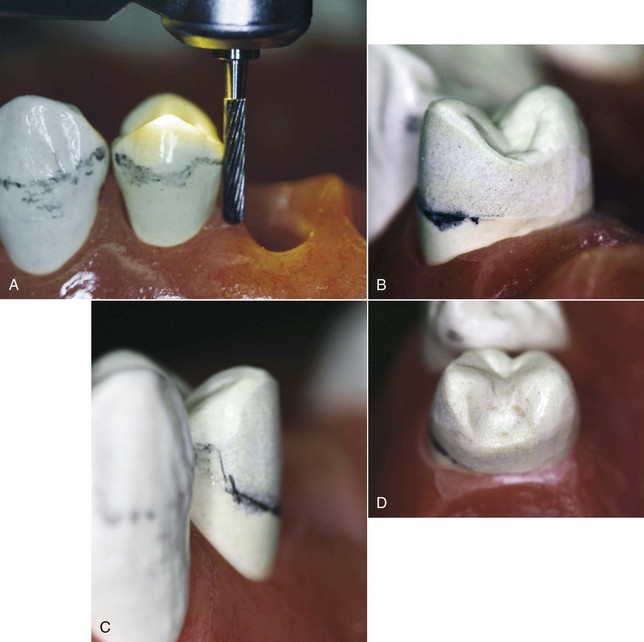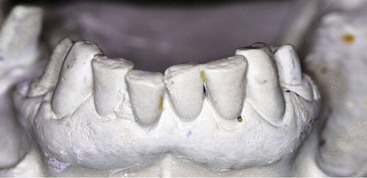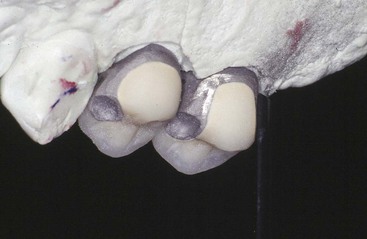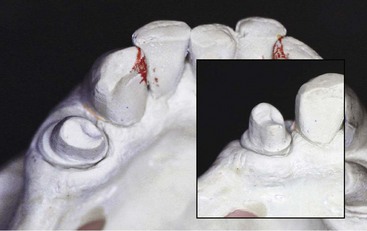CHAPTER 14 Preparation of Abutment Teeth
It is sometimes possible to design a removable partial denture so that a single posterior abutment that is questionable can be retained and used to support one end of a tooth-supported base. Then, if that posterior abutment was lost, it could be replaced with a distal extension base (see Figure 12-25). Such a design must include provision for future indirect retention, flexible clasping on the remaining terminal abutment, and provision for establishing tissue support by a secondary impression. Anterior abutments, which are considered poor risks, may not be so freely used because of the problems involved in adding a new abutment retainer when the original one is lost. Such questionable teeth should be treatment planned for extraction in favor of a better abutment in the original treatment plan.
Sequence of Abutment Preparations on Sound Enamel or Existing Restorations
Abutment Preparations Using Crowns
When multiple crowns are to be restored as removable partial denture abutments, it is best that all wax patterns be made at the same time. A cast of the arch with removable dies may be used if they are stable and sufficiently keyed for accuracy. If preferred, contouring wax patterns and making them parallel may be done on a solid cast of the arch (Figure 14-2), with individual dies used to refine margins. Modern impression materials and indirect techniques make either method equally satisfactory.
After the guiding planes are parallel and any other contouring to accommodate the removable partial denture design is accomplished, occlusal rest seats are carved in the wax pattern. This method has been outlined in Chapter 6.
The ideal crown restoration for a removable partial denture abutment is the complete coverage crown, which can be carved, cast, and finished to ideally satisfy all requirements for support, stabilization, and retention without compromise for cosmetic reasons (Figure 14-3). Porcelain veneer crowns can be made equally satisfactory but only by the added step of contouring the veneered surface on the surveyor before the final glaze. If this is not done, retentive contours may be excessive or inadequate.
Regardless of the type of crown used, preparation should be made to provide the appropriate depth for the occlusal rest seat. This is best accomplished by altering the axial contours of the tooth to the ideal before preparing the tooth and creating a depression in the prepared tooth at the occlusal rest area (Figure 14-4). Because the location of occlusal rests is established during treatment planning, this information will be known in advance of any tooth preparations. If, for example, double occlusal rests are to be used, this will be known so that the tooth can be prepared to accommodate the depth of both rests. It is inexcusable when waxing a pattern to find that a rest seat has to be made shallower than is desirable because of post-treatment planning. It can also create serious problems when a rest seat has to be made shallow in an existing crown or inlay because its thickness is not known. The opportunity for creating an ideal rest seat (if it has been properly treatment planned) depends only on the few seconds it takes to create a space for it.
Stay updated, free dental videos. Join our Telegram channel

VIDEdental - Online dental courses






